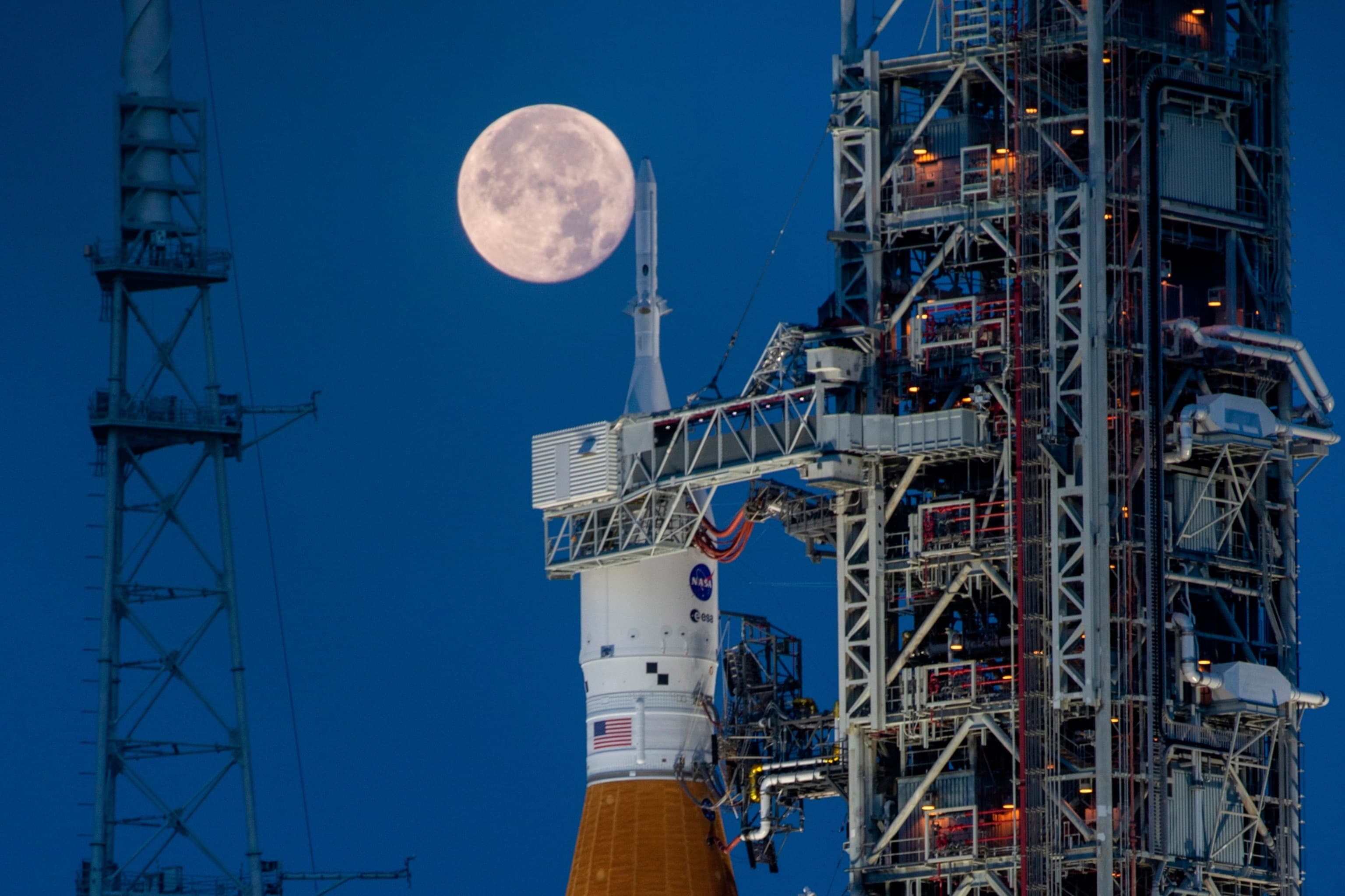Artemis Program Faces Continued Delays, Budget Scrutiny Amidst European Disappointment

NASA's ambitious Artemis program, aiming to return humans to the Moon, continues to grapple with significant delays and escalating costs, drawing sharp criticism from observers worldwide. As of November 2025, the crewed Artemis II mission, initially planned for late 2024, has been pushed to April 2026, with the pivotal Artemis III lunar landing now not expected until mid-2027. These setbacks follow a series of postponements and budgetary challenges that have plagued the program since its inception.
The program's estimated cost has soared to over $93 billion through 2025, a figure that has fueled public and expert concern. Earlier this year, the program faced a significant threat of cancellation, with a proposed budget cut in May 2025 by the Trump administration aiming to defund the Space Launch System (SLS) and Lunar Gateway after Artemis III. However, the "One Big Beautiful Bill Act," signed in July 2025, secured billions in funding, ensuring the program's continuation despite its financial trajectory.
Technical hurdles, such as damage to the Artemis I Orion capsule's heat shield, were cited as a primary reason for the recent Artemis II delay. This issue necessitated corrective actions and further testing, pushing back the timeline for the first crewed flight. The complexity of integrating various components, including the SLS rocket, Orion spacecraft, and Human Landing System (HLS), has consistently presented challenges.
The delays and perceived inefficiencies have sparked strong reactions globally. One European observer, identified as Robin, expressed profound disappointment on social media, stating, > "I'm European and our plans to go to the Moon are nonexistent, which is incredibly depressing. But the state of the Artemis program is just ridiculous. I'd be ashamed if I was responsible for such a massive failure." Despite this sentiment, European partners, including the European Space Agency (ESA), remain integral to Artemis, contributing the European Service Module for Orion and modules for the Lunar Gateway space station.
While the Artemis program aims for yearly lunar landings after Artemis VI in 2031, the recurring delays and substantial financial investment continue to cast a shadow over its progress. The program's future success hinges on overcoming these persistent challenges and demonstrating tangible advancements in its mission to establish a sustainable human presence on the Moon.